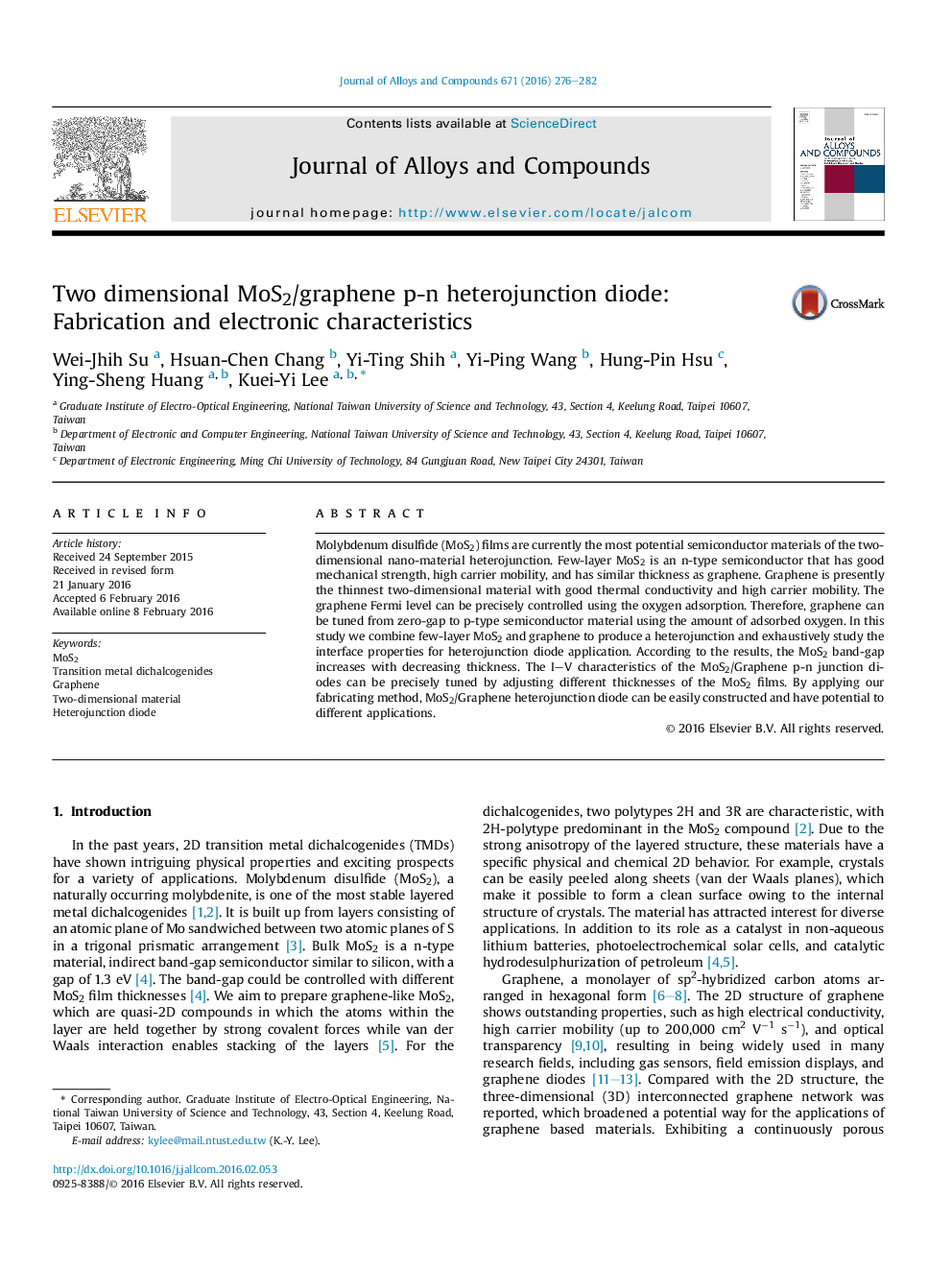| Article ID | Journal | Published Year | Pages | File Type |
|---|---|---|---|---|
| 1606042 | Journal of Alloys and Compounds | 2016 | 7 Pages |
Abstract
Molybdenum disulfide (MoS2) films are currently the most potential semiconductor materials of the two-dimensional nano-material heterojunction. Few-layer MoS2 is an n-type semiconductor that has good mechanical strength, high carrier mobility, and has similar thickness as graphene. Graphene is presently the thinnest two-dimensional material with good thermal conductivity and high carrier mobility. The graphene Fermi level can be precisely controlled using the oxygen adsorption. Therefore, graphene can be tuned from zero-gap to p-type semiconductor material using the amount of adsorbed oxygen. In this study we combine few-layer MoS2 and graphene to produce a heterojunction and exhaustively study the interface properties for heterojunction diode application. According to the results, the MoS2 band-gap increases with decreasing thickness. The I-V characteristics of the MoS2/Graphene p-n junction diodes can be precisely tuned by adjusting different thicknesses of the MoS2 films. By applying our fabricating method, MoS2/Graphene heterojunction diode can be easily constructed and have potential to different applications.
Related Topics
Physical Sciences and Engineering
Materials Science
Metals and Alloys
Authors
Wei-Jhih Su, Hsuan-Chen Chang, Yi-Ting Shih, Yi-Ping Wang, Hung-Pin Hsu, Ying-Sheng Huang, Kuei-Yi Lee,
